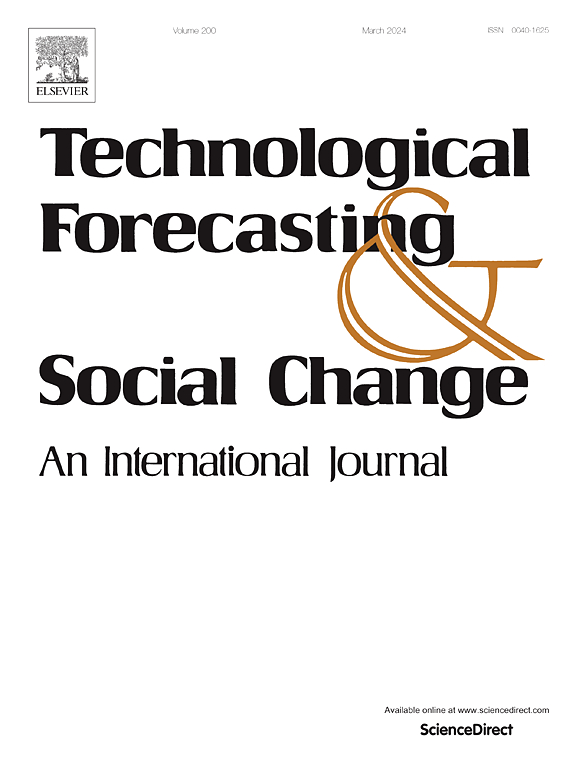Distance to frontier: From imitation to innovation
IF 13.3
1区 管理学
Q1 BUSINESS
Technological Forecasting and Social Change
Pub Date : 2025-05-13
DOI:10.1016/j.techfore.2025.124170
引用次数: 0
Abstract
This paper empirically assesses the role of imitation and innovation in driving economic growth across countries at different stages of development. The literature suggests that countries farther from the technological frontier benefit from the advantages of backwardness, whereas economies closer to the frontier experience growth increasingly driven by “innovation-based” rather than “imitation-based” economic policies. A novel measurement of “distance to the frontier” is proposed, using an economic complexity index at the country level, which offers advantages over the “total factor productivity” metric commonly used in the literature. The endogeneity of economic growth is addressed using a dynamic panel data estimator applied to data from 95 countries spanning 1995 to 2019. The empirical findings validate the existence of two distinct threshold levels: one where the contribution of imitation to growth falls below that of innovation, and another where imitation begins to hinder growth. Evidence also suggests that several developing countries may be nearing the threshold associated with the middle-income trap. Finally, the research highlights that the role of institutional governance in technological adaptation is stage-dependent.
距离前沿:从模仿到创新
本文实证评估了模仿和创新对不同发展阶段国家经济增长的推动作用。文献表明,远离技术前沿的国家受益于落后的优势,而靠近前沿的经济体则越来越多地受到“基于创新”而不是“基于模仿”的经济政策的驱动。本文提出了一种新的“前沿距离”测量方法,使用国家层面的经济复杂性指数,它比文献中常用的“全要素生产率”度量方法具有优势。使用动态面板数据估计器对1995年至2019年95个国家的数据进行了分析,解决了经济增长的内生性问题。实证结果证实了两个不同阈值水平的存在:一个是模仿对增长的贡献低于创新的贡献,另一个是模仿开始阻碍增长。还有证据表明,一些发展中国家可能正在接近与中等收入陷阱有关的门槛。最后,研究强调了制度治理在技术适应中的作用是阶段性的。
本文章由计算机程序翻译,如有差异,请以英文原文为准。
求助全文
约1分钟内获得全文
求助全文
来源期刊
CiteScore
21.30
自引率
10.80%
发文量
813
期刊介绍:
Technological Forecasting and Social Change is a prominent platform for individuals engaged in the methodology and application of technological forecasting and future studies as planning tools, exploring the interconnectedness of social, environmental, and technological factors.
In addition to serving as a key forum for these discussions, we offer numerous benefits for authors, including complimentary PDFs, a generous copyright policy, exclusive discounts on Elsevier publications, and more.

 求助内容:
求助内容: 应助结果提醒方式:
应助结果提醒方式:


